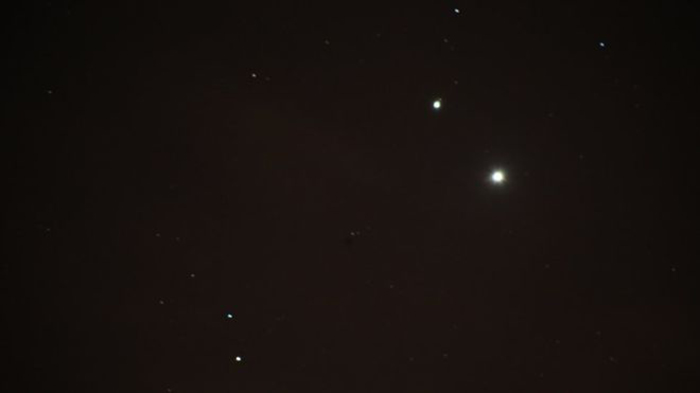The planets are best seen before sunrise and are expected to appear closest together on Thursday.
The next time the planets will come together will be in January 2021.
But how do would-be astronomers see the spectacle before it is gone?
How do I see the planets?
The planets can be seen without equipment towards the east. The best time to see them is just before sunrise because at this time they are high in the skyline but it is dark enough to see them. Binoculars and telescopes can be used to see the planets in more detail.
Which planet is which?
The easiest planet to see is Venus, which is about 12 times brighter than Jupiter, which appears second brightest.
Mars is about 250 times less bright than Venus. To see Mars it may be necessary to get up an hour before sunrise.
Where can I see them?
Wherever there are clear skies.
Where you are in the world does not affect how the planets appear.
Within the UK, said BBC weather presenter Alex Deakin, northern Scotland and the north-west and south-west of England would have the clearest weather at the beginning of the week, while Wales and south-west England would be best later in the week.
He added that all parts of the UK should have at least one clear morning this week.
The planets have been visible together from 23-24 October and will remain visible until the end of the week, according to Affelia Wibisono, astronomer at the Royal Observatory in Greenwich. The planets are expected to appear closest together on Thursday or Friday.
It will still be possible to see Mars and Venus until next month but not Jupiter.
Is a grouping of this kind unusual?
Two planets come together in this way throughout the year but it is much rarer to have three group together.
The fact the planets can be seen without binoculars or a telescope is one of the things that makes this grouping special, Ms Wibisono said. In contrast it would not be possible to see a grouping of Uranus, Neptune and Saturn without equipment, she said.
Why are the planets grouping together?
The planets are carrying out their own orbits of the Sun, which take different amounts of time to carry out, and have reached a point where they appear aligned in the Earth`s skyline, Dr Sam Lindsay, assistant editor at the Royal Astronomical Society`s astrophysics journal, said.
Are the planets closer to each other?
No. In fact the planets remain millions of miles apart and the appearance of them looking close is because of their position in relation to the Sun, which acts as a torch lighting them up, and because it is not possible for us to judge depth in space from Earth.
More about:
















































